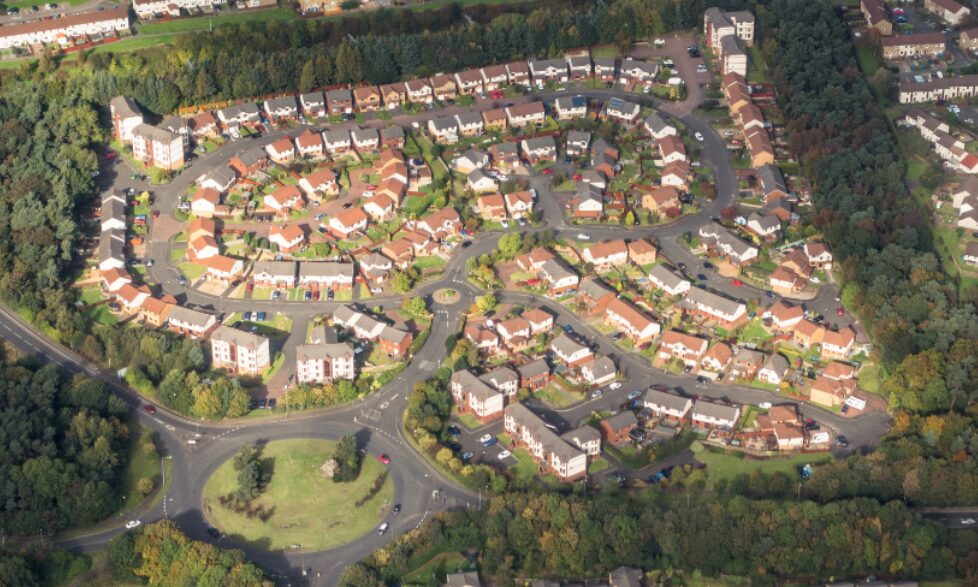We need greater ambition for the Future Homes Standard
As the consultation on the proposed Future Homes Standard (FHS) closed this week, 250 industry and community leaders publicly called for more ambition from the government in a joint letter to the Secretary of State Michael Gove, with others telling me that they will be saying so privately to Ministers.
Our homes and buildings directly account for 17% of UK carbon emissions, 23% if you count indirect emissions. This, together with the fact that the cost-of-living crisis has pushed energy bills to the forefront of the public’s minds, should surely make policies that reduce the carbon impact of new homes a no-brainer.
This is what the FHS was meant to deliver. To support the Department for Levelling Up, Homes, and Communities to develop the standard, the house building industry, led by the CEO of volume housebuilder Barratt as chair, established the Future Homes Hub and we worked collaboratively to propose a way forward, outlining five contender specifications (CSP) for the FHS in the 2023 Ready for Zero report. It was therefore with some disappointment that we saw government propose the two weakest CSPs in its consultation, not the middle contender specification 3 (CSP3) that we were all expecting, or CSP4 that we hoped for. It wasn’t much different to the current building regulations in terms of energy efficiency. Not exactly a Future Homes Standard.
On the plus side, the government prefers the higher of the two standards it has proposed – Option 1. This will end the use of gas boilers in new homes and commit us to electric heating, through on-building photovoltaics and heat pumps. It will start to require change-of-use building conversions, which provide a significant number of new homes these days, to meet the same standard. And it will bring in a replacement for the outdated SAP method of estimating building energy performance, replacing it with the Home Energy Model.
But it isn’t good enough, and compounding this, on the same day that the consultation was released, a written ministerial statement told us that the government would ideally like local authorities to stop setting local energy efficiency standards that are higher than national building regulations, and if they do, they must use SAP methodology rather than absolute energy metrics, which more accurately measure a building’s true energy use. At Bioregional we have been working with local authorities who are taking a responsible approach to staying within their local carbon budget and have been helping them to create evidence bases for where to build new homes and to what building standard, using absolute energy metrics. This evidence is being accepted by the Planning Inspectorate. And I can tell you, it’s a higher standard than the proposed Future Homes Standard.
We just had to do something to counter these two announcements of 13 December, and ended up starting a campaign with the Good Homes Alliance to convene stakeholders, alongside LETI and UKGBC, and draw out one strong industry and community voice and set of proposals, now contained in our two-page letter.
Our initial thought was ‘why has the government gone for the least ambitious standards that the industry proposed?’ The government set out two reasons to justify it, and the influence of the Prime Minister’s climate culture wars stance is clear. But we found that the arguments didn’t stack up.
Firstly, the consultation argues that the cost and complexity of building to higher standards will limit housing supply. In our letter we explain why that isn’t the case. We found no evidence that higher standards would constrain housing supply, in either the government commissioned Letwin Review, or in research compiled by the House of Commons Library. The Future Homes Hub found that the additional cost of CSP4 for a one-off 200-home site compared to Option 1, was £13.8K per plot and will be considerably less when delivered at scale. This cost would be absorbed through adjustments to land values, as with previous regulation changes, and would not limit housing supply.
Secondly, the government proposes that it is cheaper to decarbonise the grid, than to further improve the way we build our homes. In our letter we point out that “a lower building fabric standard would increase the pressure new homes place on the electricity grid at a time when the electrification of heat, transport, and industry means demand for electricity is expected to grow fourfold by 2050”. We found that improvements to building fabric and ventilation in line with CSP4 would save circa £22.6bn in electricity generation investment over 20 years compared to Option 1 and would result in a £190/year reduction in bills for occupants.
In our letter we have made some light touch suggestions for Option 1, and propose that the government starts work now on a collaborative process with developers, local authorities, and expert stakeholders to create a voluntary higher standard, a common definition of higher levels of performance, during the course of 2024, that could be used from 2025 onwards with all the learning that that would bring, and could inform the next iteration of building regulations. I hope that this government or the next government will see what a good idea this is!
Find out more about our campaign and view the open letter here.








